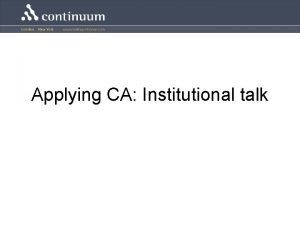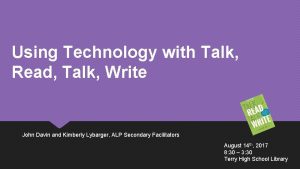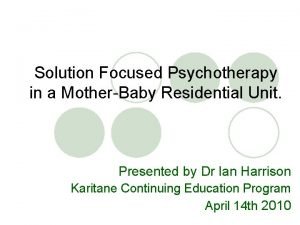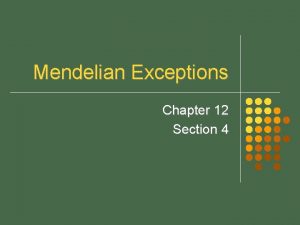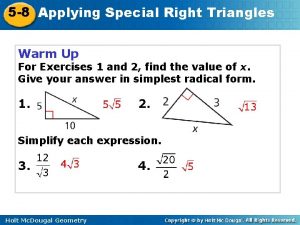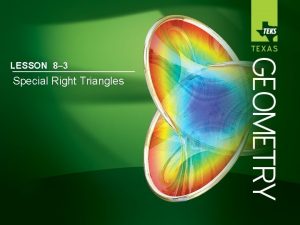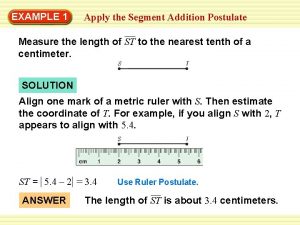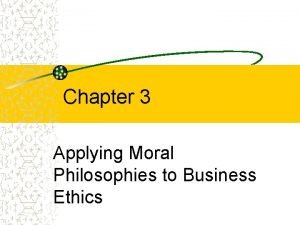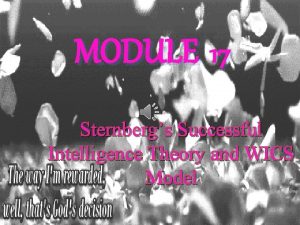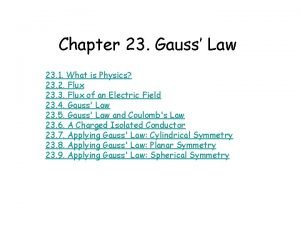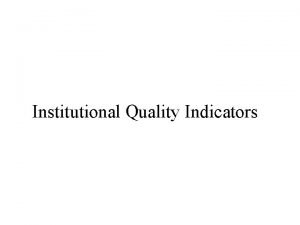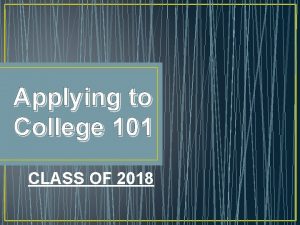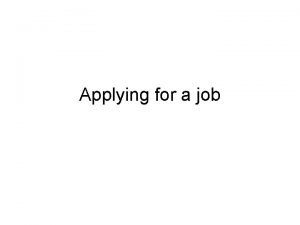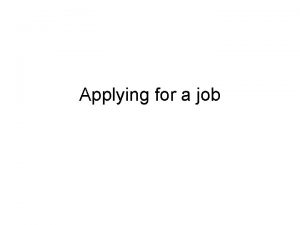Applying CA Institutional talk Institutional talk Institutional talk


















- Slides: 18

Applying CA: Institutional talk

Institutional talk • Institutional talk relates to talk that constitutes particular work- or task-oriented settings. – The setting itself does not characterise talk as institutional: it is the identities that people adopt in settings. – The setting imposes constraints on what can be done and how. – In institutional settings institutional identities are created and carried out through talk.

Institutional talk • Institutional talk is characterised in a number of ways. – In institutional talk there is an orientation to some core task, goal or identity which is associated with the institutional setting in question. – Institutional talk involves special and particular constraints on what participants consider to be allowable contributions to the interaction. – Institutional talk may be associated with inferential procedures particular to the institution.

Turn-taking in institutional settings • In institutional contexts, differences can be observed in the way in which the turn-taking systems operate. • These differences are consequential for the functioning of the institution as an institution. • The main differences in turn-taking are: – Turn-type pre-allocation – Turn allocation mechanisms

Turn-type pre-allocation • Turn-type pre-allocation: what participants are able to say is determined by the institutional setting rather than being locally managed by participants. – in courtrooms, witnesses and suspects are restricted to answering questions; – in interviews, interviewees are restricted to answering questions; – in school classrooms, at least at some points in a lesson, students are restricted to answering teachers’ questions.

Turn-type pre-allocation

Turn-type pre-allocation • The pre-allocation of turn types restricts who can speak and what can be said. • The restrictions of participation found in such settings: – give institutional members control over the ways in which the interaction can proceed; – allow institutional members to determine the ways in which non-members can participate; – allow institutional members to determine how nonmembers contributions are to be understood.

Turn-type pre-allocation and control • Determining how a non-members contribution will be understood.

Turn-type pre-allocation • Determining what non-members can say

Turn-type pre-allocation • The restriction of the turn-types used by institutional members can be seen as a consequence of their institutional roles and identities: • E. g. – News interviewers do not produce certain actions: making statements, producing evaluations or making routine acknowledgements. – The removal of such turns positions the interviewer as an institutional elicitor of information not an individual engaged in interaction with another.

Turn allocation mechanisms • Turn-talking may be mediated: one participant determines the operation of speaker change. • Such turn-taking systems are found in – Meetings: the chair controls who speaks and when – Classrooms: the teacher determines who speaks and when. • The control of the interaction – allows the interaction to be a jointly attended production of a single sequence of talk; – allows for orderly speaker change.

• Turn allocation mechanisms: meetings In large, formal meetings a designated chair may control the turn- taking structure. • The ordering of speakers may be done by: – having possible next speakers bid for a next turn during the current turn. – having the chair declare the order of speakers.

Turn allocation mechanisms: classrooms • In large group work in classrooms, teachers control the turntaking structure. – By allocating turns – By selecting bidders for the floor

Turn allocation mechanisms: classrooms • In large group work in classrooms, teachers control the turntaking structure. – If the teacher does not select a next speaker, then the teacher normally continues to be the current speaker. – Students who wish to become the next speaker must bid for a turn.

Structure of institutional interactions • Structure is a feature of all interactions, but in institutional talk particular formats are found which relate to the institutional nature of the talk. • E. g. , in police interviews: – There are three main sections: • opening, • information gathering • and closing – Each of these parts of the interview orients to particular institutional needs.

Structure of institutional interactions • Opening police interviews: – Openings begin by collecting information about the suspect/witness

Structure of institutional interactions • Opening police interviews: – Openings move to the purpose of the interview. – This is followed by a statement of rights and confirmation of these.

Structure of institutional interactions • Opening police interviews: – The opening then moves to information gathering by detailing events of a crime.
 Institutional talk
Institutional talk Talk, read talk write template
Talk, read talk write template Amateurs talk strategy professionals talk logistics
Amateurs talk strategy professionals talk logistics The words use are not
The words use are not Chapter 12 lesson 2 applying mendels principles
Chapter 12 lesson 2 applying mendels principles 5-8 applying special right triangles answer key
5-8 applying special right triangles answer key Applying special right triangles
Applying special right triangles Chapter 33 applying paints and enamels
Chapter 33 applying paints and enamels 17:7 providing first aid for heat exposure
17:7 providing first aid for heat exposure Bleach concentration
Bleach concentration 5-8 applying special right triangles
5-8 applying special right triangles 8-3 special right triangles worksheet answers
8-3 special right triangles worksheet answers Segment addition postulate bisector
Segment addition postulate bisector Applying moral philosophies to business ethics
Applying moral philosophies to business ethics 8-3 lesson quiz geometry answers
8-3 lesson quiz geometry answers Sas similarity theorem
Sas similarity theorem Wics model activities
Wics model activities Is an hypothetical shape that enclose a charge is?
Is an hypothetical shape that enclose a charge is? Applying mendels principles
Applying mendels principles
